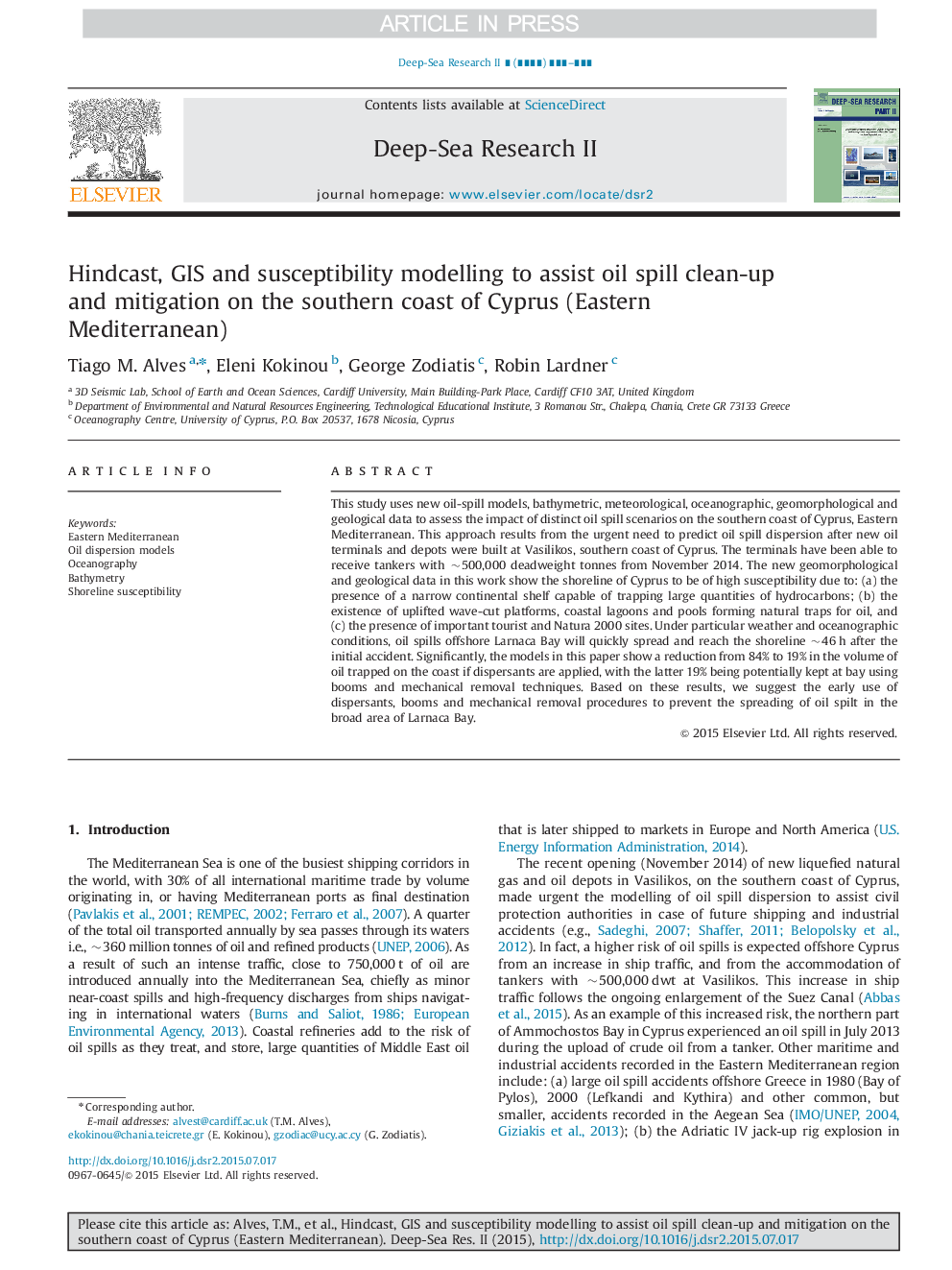| Article ID | Journal | Published Year | Pages | File Type |
|---|---|---|---|---|
| 6383873 | Deep Sea Research Part II: Topical Studies in Oceanography | 2016 | 17 Pages |
Abstract
This study uses new oil-spill models, bathymetric, meteorological, oceanographic, geomorphological and geological data to assess the impact of distinct oil spill scenarios on the southern coast of Cyprus, Eastern Mediterranean. This approach results from the urgent need to predict oil spill dispersion after new oil terminals and depots were built at Vasilikos, southern coast of Cyprus. The terminals have been able to receive tankers with ~500,000 deadweight tonnes from November 2014. The new geomorphological and geological data in this work show the shoreline of Cyprus to be of high susceptibility due to: (a) the presence of a narrow continental shelf capable of trapping large quantities of hydrocarbons; (b) the existence of uplifted wave-cut platforms, coastal lagoons and pools forming natural traps for oil, and (c) the presence of important tourist and Natura 2000 sites. Under particular weather and oceanographic conditions, oil spills offshore Larnaca Bay will quickly spread and reach the shoreline ~46Â h after the initial accident. Significantly, the models in this paper show a reduction from 84% to 19% in the volume of oil trapped on the coast if dispersants are applied, with the latter 19% being potentially kept at bay using booms and mechanical removal techniques. Based on these results, we suggest the early use of dispersants, booms and mechanical removal procedures to prevent the spreading of oil spilt in the broad area of Larnaca Bay.
Related Topics
Physical Sciences and Engineering
Earth and Planetary Sciences
Geology
Authors
Tiago M. Alves, Eleni Kokinou, George Zodiatis, Robin Lardner,
